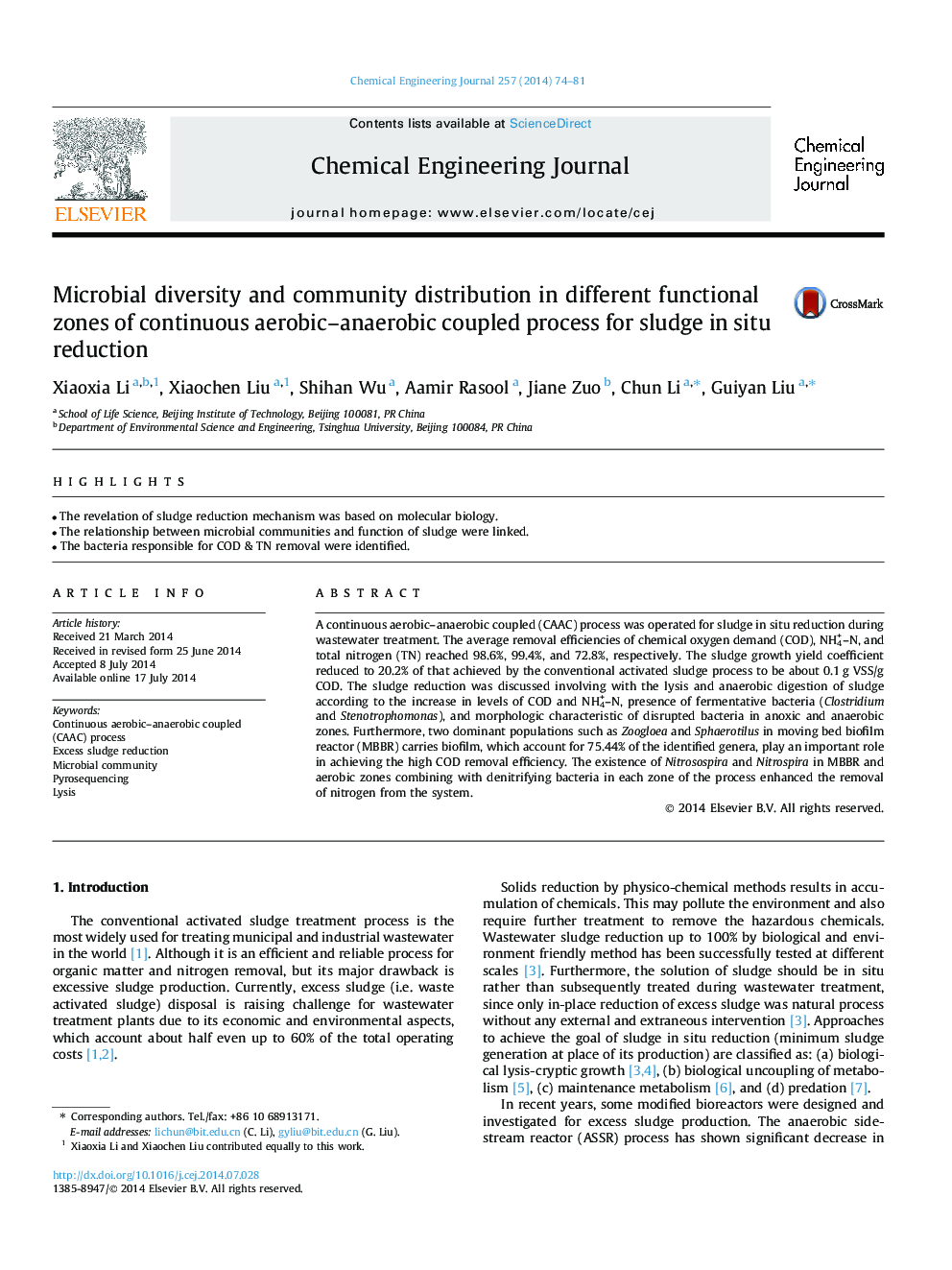| Article ID | Journal | Published Year | Pages | File Type |
|---|---|---|---|---|
| 147315 | Chemical Engineering Journal | 2014 | 8 Pages |
•The revelation of sludge reduction mechanism was based on molecular biology.•The relationship between microbial communities and function of sludge were linked.•The bacteria responsible for COD & TN removal were identified.
A continuous aerobic–anaerobic coupled (CAAC) process was operated for sludge in situ reduction during wastewater treatment. The average removal efficiencies of chemical oxygen demand (COD), NH4+–N, and total nitrogen (TN) reached 98.6%, 99.4%, and 72.8%, respectively. The sludge growth yield coefficient reduced to 20.2% of that achieved by the conventional activated sludge process to be about 0.1 g VSS/g COD. The sludge reduction was discussed involving with the lysis and anaerobic digestion of sludge according to the increase in levels of COD and NH4+–N, presence of fermentative bacteria (Clostridium and Stenotrophomonas), and morphologic characteristic of disrupted bacteria in anoxic and anaerobic zones. Furthermore, two dominant populations such as Zoogloea and Sphaerotilus in moving bed biofilm reactor (MBBR) carries biofilm, which account for 75.44% of the identified genera, play an important role in achieving the high COD removal efficiency. The existence of Nitrosospira and Nitrospira in MBBR and aerobic zones combining with denitrifying bacteria in each zone of the process enhanced the removal of nitrogen from the system.
